Acoustic systems: types, characteristics, best models, selection rules
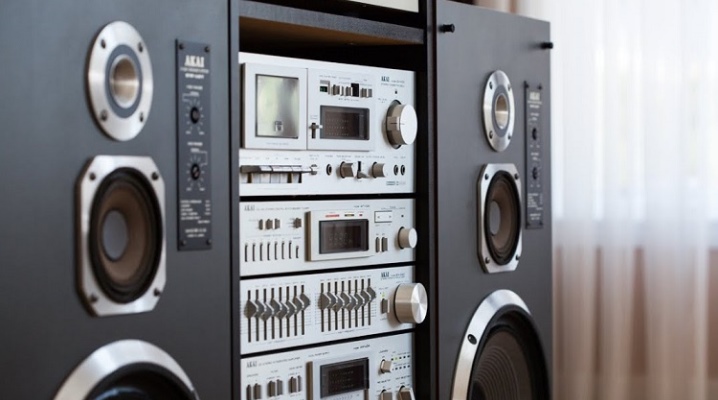
What are the acoustic systems: their types, characteristics, the best models, and how to choose the right one? We will try to understand this and many other things in our review.
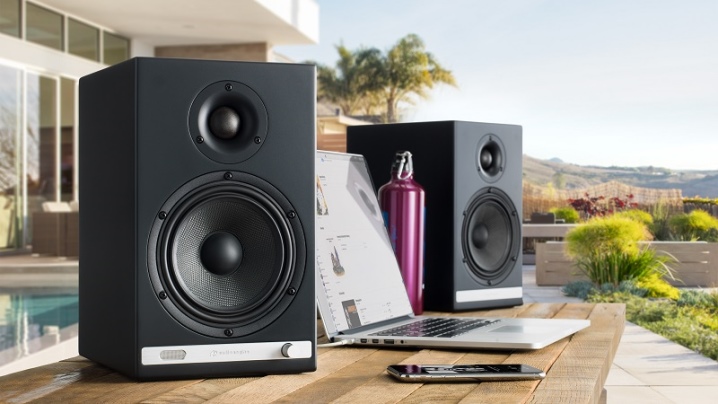
What it is?
To begin with, it is worth deciding on the terminology, since definitions such as "speaker", "speaker", and also "speaker system" are used by many at random these days, thereby creating a lot of confusion.
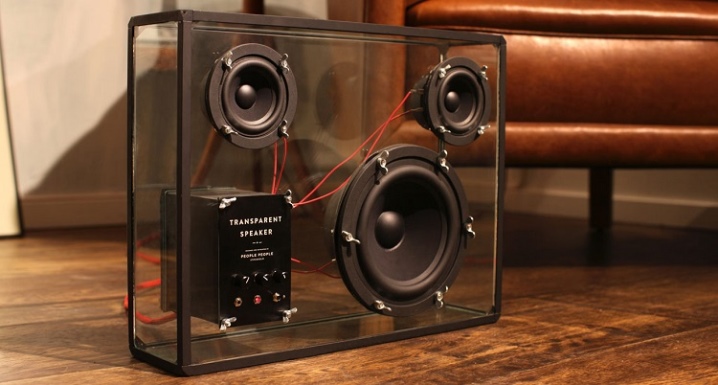
So, a loudspeaker is a device designed for the most efficient emission of sound waves into the surrounding space. Necessarily contains directly a loudspeaker, a variant of acoustic design, as well as electrical elements necessary to maintain the functionality of the system (regulators, filters, etc.).

A set of loudspeakers such as Hi-Fi, as well as Hi-End is often referred to as "speaker system". It consists of the following elements:
- loudspeaker heads - they can be in a single copy or in a set, each of them functions in its own individual frequency range;
- hard case;
- filtering and correcting circuits, and in addition, devices necessary to indicate the degree of protection against strong overloads;
- audio cables;
- sound amplifiers for active speakers.
These devices are included in the set of tape recorders, music centers and electrophones, and are installed as part of sound reproducing equipment in concert halls and cinemas.
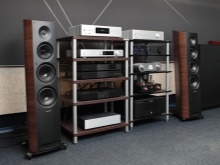
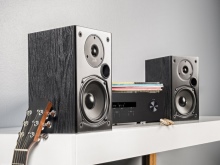
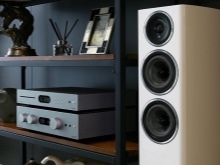
Views
Acoustic systems are different: ceiling and wall, coaxial, powerful and weak, autonomous or multimedia, with or without a battery. They can be classified on several grounds.
By appointment
Depending on the functional purpose, the speakers may differ in their design features and appearance. So, most of the audio equipment presented in the modern segment can be divided into several categories:
- for Hi-Fi and High-End speakers;
- for home theater;
- for PC;
- for sound amplification, including broadcast models for conference rooms;
- theater and concert speakers, models for the assembly hall;
- studio;
- for private listening;
- automobile;
- street.
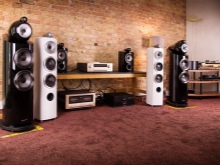

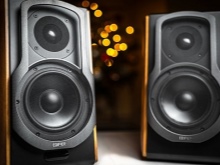
By construction type
Depending on the design features, several types of acoustics are distinguished.
- Active speakers. These are speakers that have a built-in power amplifier. In order to provide the necessary level of sound reproduction, the speaker is connected directly to the amplifier (you do not need to buy a separate one); for this, a regular interconnect cable will be enough.
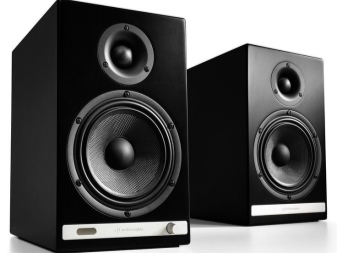

- Passive speakers. A fairly common option, such models include a built-in emitter (speakers), as well as a small crossover filter through which the speakers are connected to an additional amplifier using an acoustic cable. They do not have their own amplifier of power characteristics.
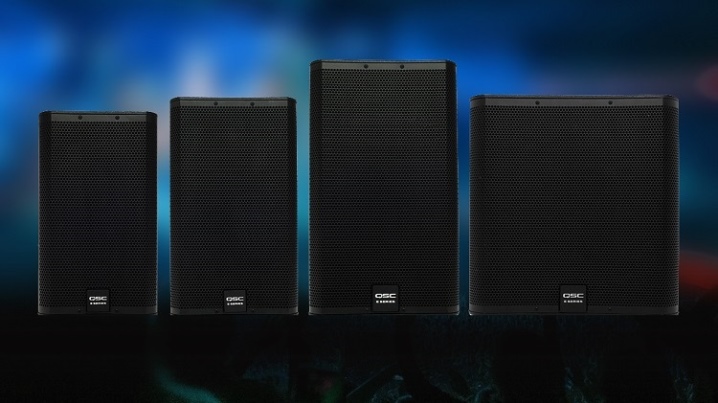
- Horn speakers. This is equipment that does not emit sound waves directly, but through a horn attached to it. Most often, speakers of this type have increased sensitivity, which makes them as relevant as possible for all kinds of low-power tube amplifiers.
Such designs have more accurate sound directivity, they are more difficult to set up and distribute throughout the hall, but if you follow all the rules for installing such equipment, the stereo picture is more accurate.
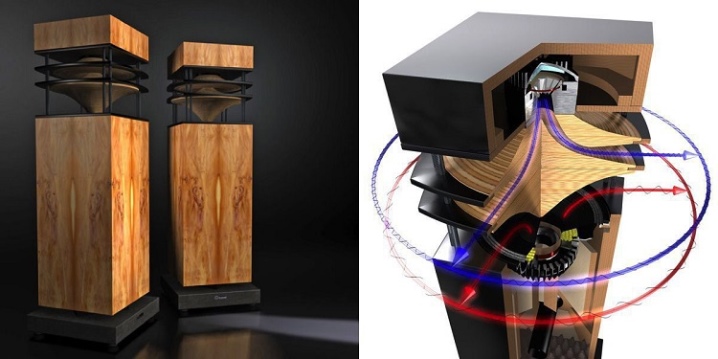
And also other types of speakers stand out.
- Electrostatic - in this case, the thinnest film acts as the speakers, which, in the course of the interaction of the electromagnetic and alternating fields, sways and emits a very thin and clear sound.
- Planar speakers - they are structurally similar to those described above, but the film vibrates in a field generated by magnets.
- Front speaker - is a pair of stereo speakers, between which the main speaker is fixed. It is this mechanism that is used to listen to standard stereo sound.
- Speaker with acoustic labyrinth - the latter is a curved tube extending deep into the body. Thanks to the damping coating of its walls, sound is obtained without any external noise.
- Open kits - boxes without a back panel. This makes the sound in them extremely clear.
- Bipolar speakers - it is a set of speakers emitting sound in several directions.
- Counterperture speakers - a rather rare variant of sound equipment. They do not have the option of directional playback of the recording, it seems to disappear into the room.

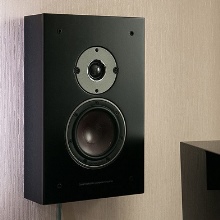
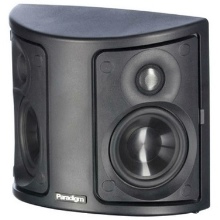
By size
Depending on the size and shape, there are several variants of the speaker.
- Shelving... The name comes from the compact size of the speakers, which makes it impossible to install them directly on the floor. Usually, to place such acoustics, special stands are needed, only they allow you to achieve the ideal sound quality of the audio system. They have a pair of speakers.
The small dimensions of such equipment allow it to be installed in city apartments and small premises.
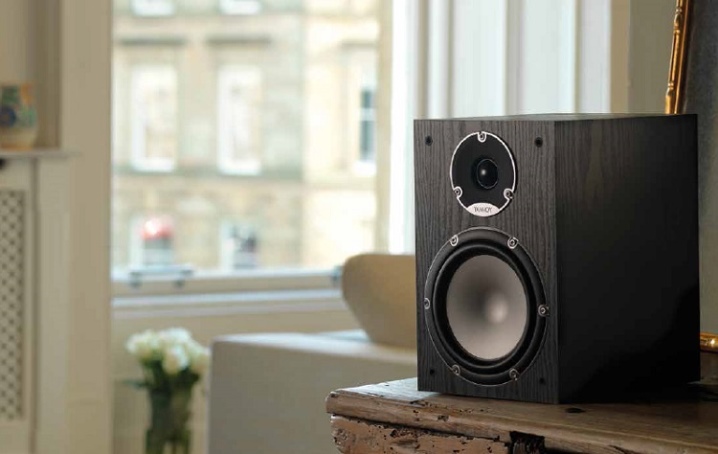
- Floor standing speakers - this equipment has more impressive dimensions, especially in height, so they can be installed without the use of stands and stands. As a rule, they have from 1 to 5-7 speakers, the maximum sound quality is achieved in a spacious room, since in small rooms low frequencies and bass begin to dominate.
Floor-standing acoustics are always more expensive than bookshelf ones, since they are not only large, but also require complex calculations during manufacture, especially at the stage of matching the speakers and crossover filter.
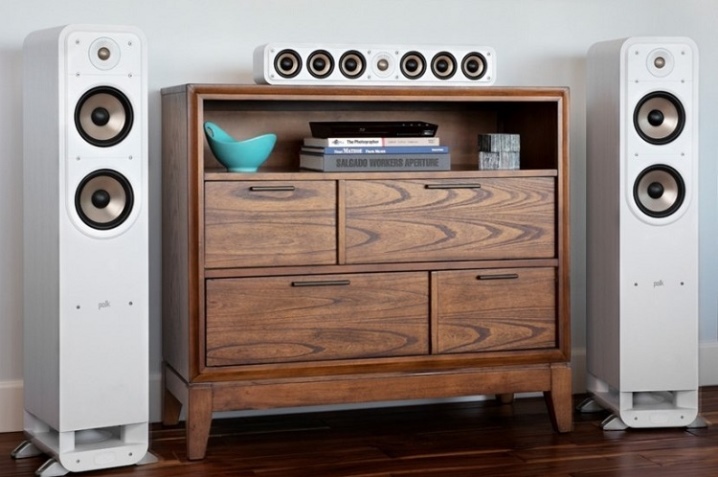
main parameters
Let us dwell in more detail on the main parameters of acoustic technology.
Number of stripes
This parameter directly indicates the number of speakers in the column. For example, computer speakers usually have only one lane, while 3.1 systems consist of a pair of speakers. The most reliable broadband speakers are considered, in which there is a division into low, medium and high frequencies. Not so long ago, more advanced installations with sound separation into 5 and even 7 channels appeared on the market. Respectively, the more bands there are in the speaker, the more versatile and detailed the sound will be reproduced.
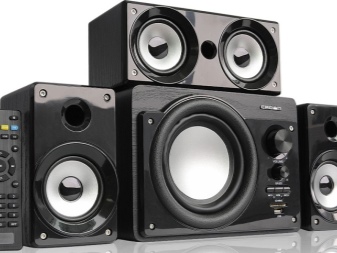

Amplitude-frequency characteristics
The best option for sound reproduction is considered to be acoustics, in which the frequency response is in the form of a straight line. However, in practice, the overwhelming majority of real designs are rather curves with a large number of dips and peaks. Such unevenness is explained both by the general imperfection of the speaker system as a whole, and by the presence of parasitic resonances, as well as by vibration of the cabinet walls and other components.
The level of unevenness of the frequency response is determined by the ratio of the highest sound pressure to the lowest, or, in accordance with another method, the ratio of the extreme parameter to the average in a predetermined frequency range. The most effective is the equipment of the Hi-Fi category, in which the unevenness should not exceed ± 4 dB in the audio range from 100 to 8000 Hz.

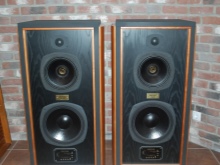

Sound coding system
Nowadays, there are a variety of options for digital coding of sound, thanks to which it can be reproduced in full. First came the stereo effect, then formats such as Dolby Stereo Surround. Such encodings imply dividing the recording into several channels, thereby providing maximum immersion in sound and full sound. Unfortunately, not every speaker can reproduce sound in a multichannel code system.
For those who intend to listen to audio files on an acoustic installation, it is better to buy a 3.5 or 7 channel speaker model, as well as a player that can read Blu-ray format.
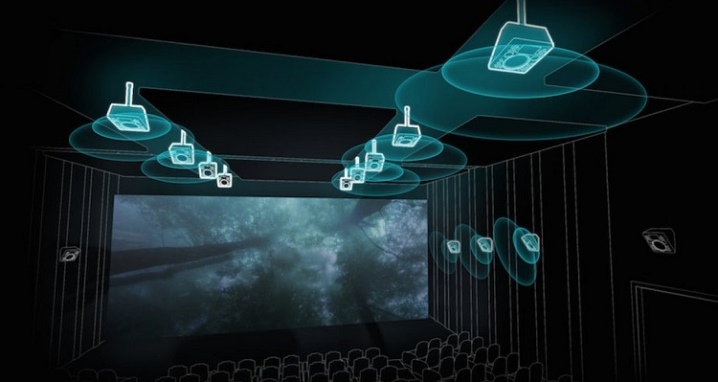
Phase inverter
Modern high quality speakers are equipped with a bass reflex. It is a kind of hole or pipe located in the speaker cabinet. Audio equipment, consisting of several small satellites and a subwoofer, assumes the use of a phase inverter only at low frequency modes.
For a small-sized room, the side or front location of the element will be the best choice, in large spaces, it is better to give preference to installations where the bass reflex is located at the back or side.
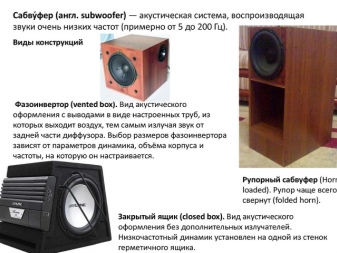

Body material
Speakers are made from a wide variety of materials, each of which has a major impact on sound quality. Traditionally used for the production of columns:
- wood;
- Chipboard;
- MDF;
- plastic;
- stone;
- plexiglass;
- metal.
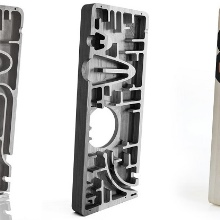
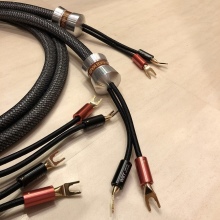

Plastic models are most in demand on the market - this is a durable high-quality material that does not distort sound, and, moreover, has an affordable price. The highest quality equipment is considered to be made of wood. Natural wood provides exceptional acoustic performance and enhances sound quality many times over. To listen to the melody at low and high frequencies, it is worth choosing a stone that prevents bass distortion.
The best solution are models from chipboard and MDF. But metal and glass do not have the most beneficial effect on sound reproduction - everything here will depend on the parameters of the speaker, the total number of bands and the characteristics of the room.
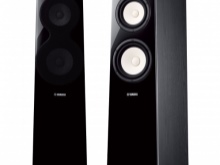
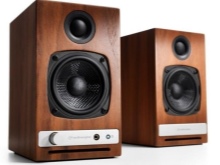
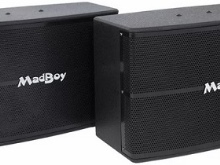
Additional functions
Popular options include the ability to control from the remote control, as well as a system for setting up each speaker separately - such functions are present in the most expensive products. Some speakers additionally include a display that reflects the current state - this solution allows you to adjust the equipment not only by ear, but also visually.
Selected models of acoustic equipment have wall mounts - this is especially true in homes where the computer desk cannot boast of large dimensions. If we compare ordinary speakers and wireless ones, then, without a doubt, the latter will lose in quality - despite the convenience of portable equipment, the wireless signal takes up a significant part of the purity of sound and its power.
Speakers with a microphone, karaoke, and backlighting have become very popular.


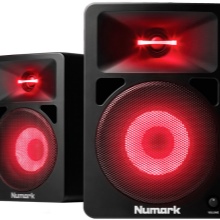
Design
When choosing a design solution for acoustic equipment, you need to adhere to the rule that the speakers should be an addition to the interior of the room, harmoniously fit into the stylistic design, and not serve as a bright accent. Accordingly, for calm interior shades, it is better to prefer laconic colors of acoustic systems, and for rooms in bright colors it is better to purchase models of saturated colors. Think in advance about how your equipment will look from the outside and try to choose models that will make the most favorable impression on you and your children.
Depending on the shape, they can be made in the form of a cube or a parallelepiped, spherical and flat models are popular.
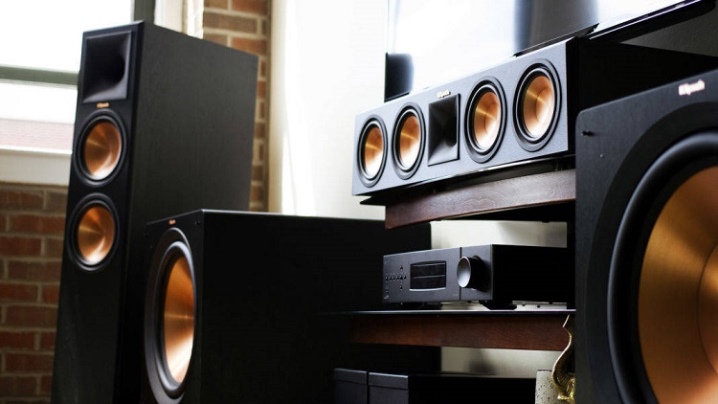
Rating of the best models
We offer a small overview of the speaker models included in the top according to user reviews.
Yamaha NS-555
This is a premium active speaker with a maximum output of 100 watts. Includes two speakers, the amplifier is purchased separately, and it is important that it matches the speaker level exactly. The technique provides for a three-way mode, has magnetic shielding, so that the speakers can be placed even next to other equipment, without fear of any adverse consequences. The sound is clear and balanced - this is made possible by four speakers. The speaker provides high quality sound reproduction at mid frequency and is versatile.
Advantages:
- bright unusual appearance;
- optimal price-quality ratio;
- flat frequency range;
- good bass;
- bi-wiring system connection function;
- high power reserve, which allows you to listen to audio recordings in spacious rooms;
- the dull body ensures the absence of rattling and resonance;
- increased build quality.
Minuses:
- poor detail and transparency of sound;
- easily soiled case;
- the presence of a Fi-port, which does not allow the speakers to be placed close to the walls.
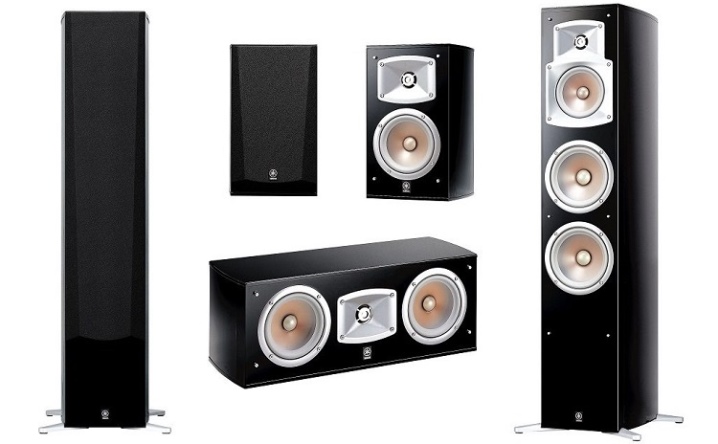
Pioneer S-DJ50X
A relatively budgetary, but nevertheless functional and high-quality model, which, in terms of its technical and operational qualities, is almost no different from analogues from the premium segment. Suitable for connecting to computers and TVs in small spaces. This model successfully combines the highest quality stereo speaker with active amplifier functionality. Equipped with a special unit that allows you to adjust the sound volume and control the equalizer.
The system includes LED indicators that indicate operating status.
Pros:
- affordable cost;
- high sound quality;
- good build;
- stylish design;
- excellent low frequencies;
- compact dimensions.
Disadvantages:
- weak equipment;
- strong hum when connected to the same outlet with a sound carrier.
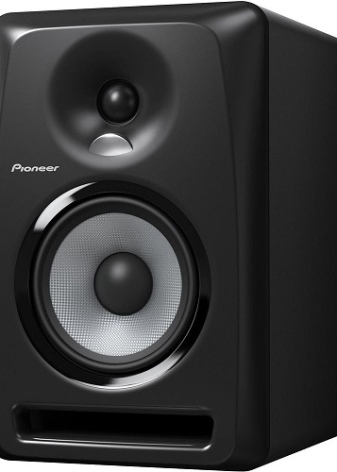
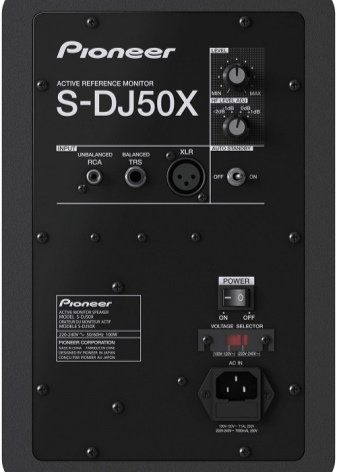
Klipsch R-3800 W
This is a closed-type recessed loudspeaker with a wall mount option. Includes aluminum dome tweeter horn and 8 '' woofer. The maximum power is 50 watts, and for this category of acoustic equipment this is a very good parameter. In general, the speaker is of high quality, it gives good stereo sound in small rooms. In order to use it in large spaces, you need to additionally buy a subwoofer, which amplifies the sound of low frequencies.
Pros:
- inexpensive;
- interesting color schemes;
- lightness and compactness;
- the presence of a protective mesh made of aluminum;
- the presence of an IR receiver.
Minuses:
- low power;
- weak bass.
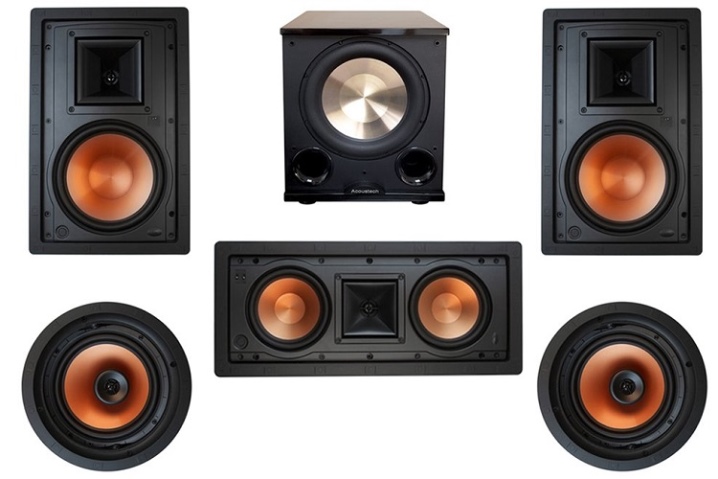
Monitor Audio Radius R225
High-quality speaker system with a wide frequency range. Despite their compact size, these speakers provide an excellent picture of sound. The maximum power is 10W, which is quite a high figure. All elements are equipped with low frequency radiators. The body is made in two colors (white and black). Usually the "body" of the speakers is made of lacquered beech or rosewood.
Pros:
- a pair of low-frequency emitters;
- high build quality and all major components;
- good power;
- high degree of magnetic protection;
- stylish design;
- high-quality sound panorama;
- detail and clarity;
- small size.
Minuses:
- high price.
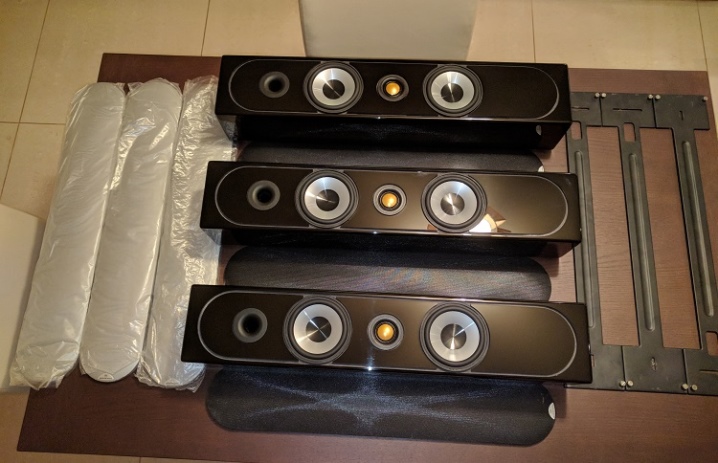
How to choose?
Obviously, the larger the speaker, the better the sound quality will be. However, this is not the only factor that needs to be taken into account when choosing equipment. So, for installation in a stationary "odnushka" "shelf units" are suitable - the size of the room is simply not enough to reveal the full potential of volumetric speakers. For large halls, it is better to make a choice in favor of "floor standing". One of the most important points when choosing a technique is the frequency range.The human ear distinguishes sounds in the range from 16 Hz to 20 kHz - the larger the corridor within this range, the better the sound will be. Some manufacturers have an upper limit of 28000-30000 Hz - you shouldn't be fooled by this value, the human ear simply does not hear such a sound.
Pay special attention to power... For a home, a parameter of 100 W will be quite enough, for spacious rooms it is better to choose products with higher characteristics. As for the price, for an office one can be quite content with cheap models of Russian firms. But for organizing performances, it is better to make a choice in favor of more expensive products from brands with a worldwide reputation.
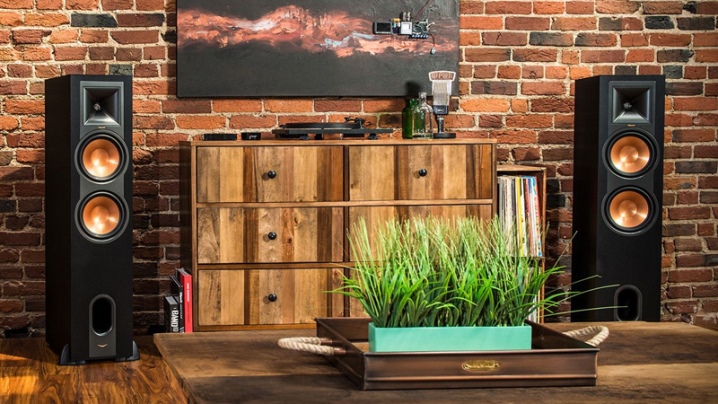
Configuration Recommendations
When setting up your speakers, it is extremely important to place your speakers correctly. All experts agree that they should not be placed in the corners. The fact is that the angle will absorb sound waves and form a hum that no audio system, even the highest quality one, can beat. Keep in mind that the quality of the sound will also be affected by the characteristics of the room itself. Speakers on a bare floor will sound very different from those on carpet.
The less furniture there is in the room, the stronger the sound will be, and, on the contrary, the more furniture there is in the room, the weaker the speaker will reproduce the sound after tuning.
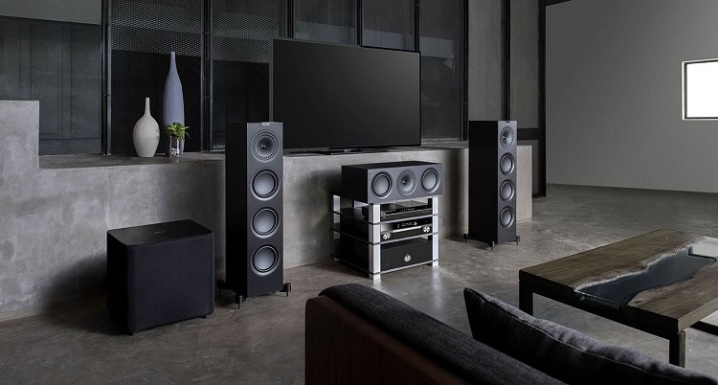
In the next video, you'll find Frequently Asked Questions about speaker systems.













The comment was sent successfully.